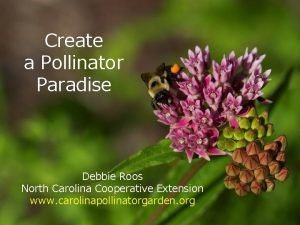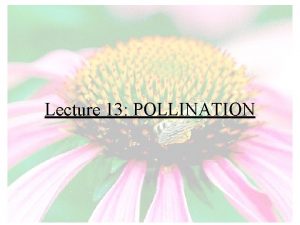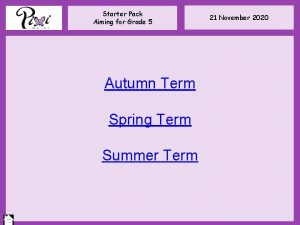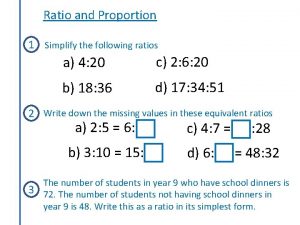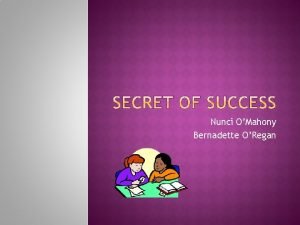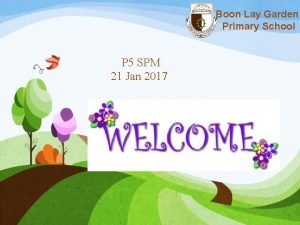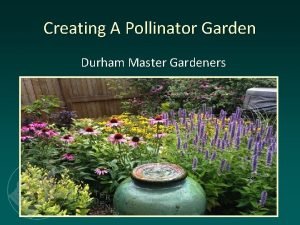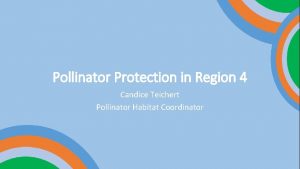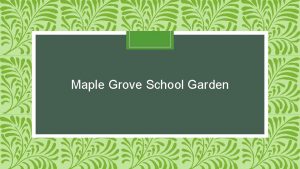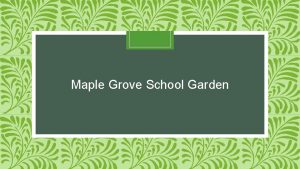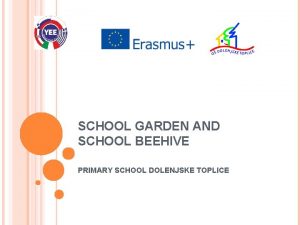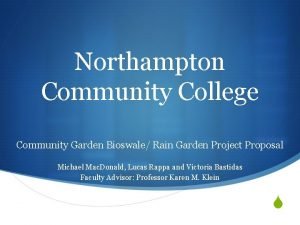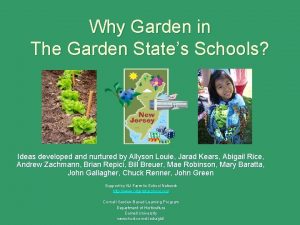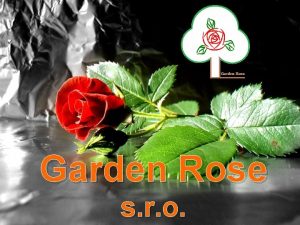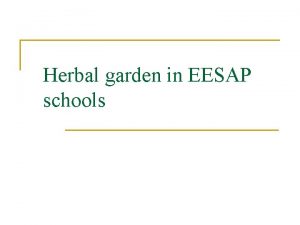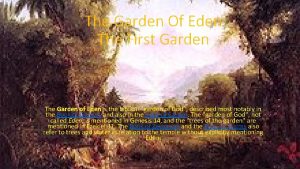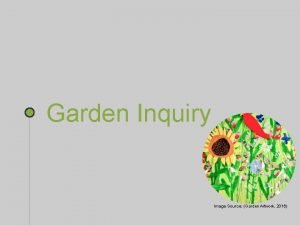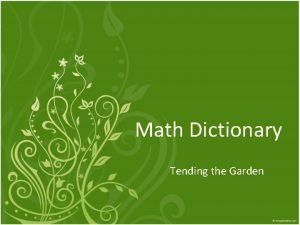Creating a School Pollinator Garden Maureen Regan Pollinator















- Slides: 15

Creating a School Pollinator Garden -Maureen Regan

• Pollinator Garden 101: • What is your goal • What pollinators you would like to invite to your garden • How big is your site to work in • How big is your budget

Simple Steps in Creating a Pollinator Garden

2. Preparation of Soil The key to having a thriving garden is great soil. Proper soil preparation addresses two issues: Ensuring the adequate supply of natural nutrients Soil structure: native soil either drains poorly or hold water. • Add sufficient organic material such as compost, aged manure and decomposed leaves to improve existing soil. Soil with good structure drains well and holds sufficient moisture. The goal is to create an ideal mix of enough organic materials. A well prepared soil contains nutrients and microorganisms that provides an environment that will promote health and growth of whatever is planted in it. • Compost is an ideal soil amendment. • Start working the soil from a 3 in depth to 12 inches. If using a container, maintain a well- drained soil. • There are no shortcuts to preparing the foundation to a healthy Pollinator garden than spending the time to create a good soil base.

3. Garden Bed design or Container Gardening • Color, shape and Size is important in laying out the garden design.

An understanding of what makes a pollinator tick will help in the planning, for example if you are looking to attract hummingbirds, you may want to add a honey suckle vine and this will need room to run. A smaller plant like salvia or red cannas works just as well.

Elements for a thriving wildlife habitat Water Source Wildlife Habitat

Seasonal Planning Create a time and action calendar. Assign roles on a rotating basis. Ask for help from other teachers and students to help with maintenance during lunch, after school etc.

4. Choosing Plants Research and Observation

Suggested Plant List Native Plants: Rose Milk Weed Prairie Milkweed Bush's Coneflower, Yellow Fireweed Wild Hyacinth Kankakee Mallow White Indigo Wild Lance-Leaf Coreopsis Bush's Poppy Mallow New England Aster Cardinal Flower Wild Bergamot Wild Senna Prairie Blazing Star Hairy Mountain Mint Royal Catchfly Showy Goldenrod Ohio Spiderwort Common Hop Sedge River Oats Canada Wild Rye Blue Grama Palm Sedge Brown Fox Sedge Prairie Blue Eyed Grass Large Flowered Beardtongue Queen of the Prairie Butterfly Weed Culver's Root Flowering Spurge

5. Maintenance, Time and action Calendar Have a garden maintenance task schedule and assign tasks

6. Education and Outreach

7. Budget • Simple Budget Chart • Item • Source/Who • Budgeted Amount


 Debbie roos
Debbie roos Pollination definition
Pollination definition Lisa is 10 centimeters taller than
Lisa is 10 centimeters taller than Dublin high attendance line
Dublin high attendance line Njucc
Njucc Factorise4f2+f
Factorise4f2+f Cordelia goneril
Cordelia goneril Sources oses xrosvarnham regan theinformation
Sources oses xrosvarnham regan theinformation Brian regan richmond va
Brian regan richmond va Simplify the following ratios
Simplify the following ratios Regan gore
Regan gore Sam rayburn tollway toll booths
Sam rayburn tollway toll booths Regan frasier
Regan frasier Bernadette o'regan
Bernadette o'regan Lauren regan attorney
Lauren regan attorney Boon lay garden primary school teachers
Boon lay garden primary school teachers
